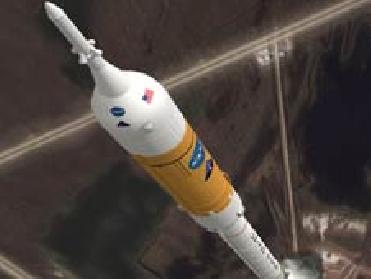
WASHINGTON, DC (BNS): NASA is developing the country�s next space flagship Ares I rocket to replace the existing space Shuttles that will be retired in 2010. Nearly 200 companies from Connecticut to California and thousands of workers in 32 states and Puerto Rico are helping to achieve this dream of building the next generate Constellation Programme fleet. An army of people is involved in the various stages of the Ares projects - the rocket's first stage, upper stage or upper stage engine.
Manager of Ares Projects at NASA's Marshall Space Flight Center in Huntsville, Alaska, Steve Cook said that the contributing companies and organisations across the nation are providing critical engineering expertise, hardware and materials fabrication and testing a wide spectrum of support services.
Highlighting the importance of the work, Cook said that the work of the various organisations ensures that NASA will, in the next decade, successfully fly the Ares I rocket to orbit to support the International Space Station (ISS). �It will successfully send Americans back to moon, preparing the way for rewarding new journeys of discovery throughout the Solar System,� Cook said.
Describing, the 165-foot-long Ares I first stage, the backbone of the integrated launch vehicle system, NASA said that it was a five-segment solid rocket booster derived from the space shuttle's twin boosters, enhanced and reconfigured to produce greater thrust. �Burning more than 1.3 million pounds of propellant in just 125.8 seconds, the first stage will propel the rocket to an altitude of roughly 36 miles before being jettisoned. As the Ares I upper stage engine ignites, the first stage will deploy parachutes and gently drop into the sea for recovery, analysis and reuse,� NASA said.
Explaining further the new Constellation Programme, NASA said that the 84-foot-long Ares I upper stage will be propelled by a J-2X main engine fuelled with liquid oxygen and liquid hydrogen. �The J-2X is an evolved variation of two historic predecessors: the powerful J-2 engine that propelled the Apollo-era Saturn IB and Saturn V rockets, and the J-2S, a simplified version of the J-2 developed and tested in the early 1970s but never flown,� NASA stated.
NASA said that the J-2X will operate for approximately 465 seconds, burning more than 302,200 pounds of propellant, and will shut down when Ares I reaches an altitude of roughly 83 miles. It is then that the Orion crew exploration vehicle will separate from the upper stage, and its own engine will fire to insert the spacecraft into low Earth orbit, NASA said, quickly adding that the upper stage will re-enter the Earth's atmosphere and fall into the Indian Ocean as per the current plans.
With more than four years of development, the NASA� Constellation Programme fleet, includes the Ares I, the Ares V heavy cargo launch vehicle and the Orion spacecraft
NASA said that the Ares V will serve as its primary vessel for safe, reliable delivery of large-scale hardware to space, including the Altair Lunar Lander, also now in development, and supplies needed to establish a sustained human presence on the moon.
It has been said that the Orion will safely carry a crew of four to six astronauts to different destinations in space.
Unveiling its ambitious plan, NASA said that the first Ares I test flight, called Ares I-X, is set for next year, while the first crew launch of Ares I rocket is scheduled for 2015. If all goes well, NASA will send the first mission to the moon around 2020.
Ares Project manager said that since NASA was set up half a century ago, it has inspired technology innovations that benefit the Americans and people across the globe in many ways. �Our team effort on Ares I will continue that legacy, and also help to stimulate our economy and reignite the country's passion to journey to worlds beyond our own,� Cook said and quickly adding that they were proud to help in the nation�s leadership race.
�It takes a nation to build a rocket and this is the rocket that will inspire our nation,� he said.
According to well laid out plans, Ares Projects are managed by Marshall Center for NASA�s Exploration Systems Mission Directorate in Washington, while the development programme for the next-generation launch vehicle is in the hands of NASA's Johnson Space Center in Houston.
From the industrial side there are three main contractors helping NASA in the Ares I launch vehicle. Alliant Techsystems (ATK) of Minneapolis has been awarded the contract for the Ares I First Stage Project worth $1.8billion, while the Boeing Co. of Huntsville, Alaska, looks into the Upper Stage production worth $2 billion and Ares I Upper Stage Avionics Unit worth $ 800 million. Pratt & Whitney Rocketdyne Inc., of Canoga Park, California, has the contract for the Ares I Upper Stage Engine Project, valued at approximately $1.2 billion.
 Previous Article
Previous Article













The Indian Air Force, in its flight trials evaluation report submitted before the Defence Ministry l..
view articleAn insight into the Medium Multi-Role Combat Aircraft competition...
view articleSky enthusiasts can now spot the International Space Station (ISS) commanded by Indian-American astr..
view article